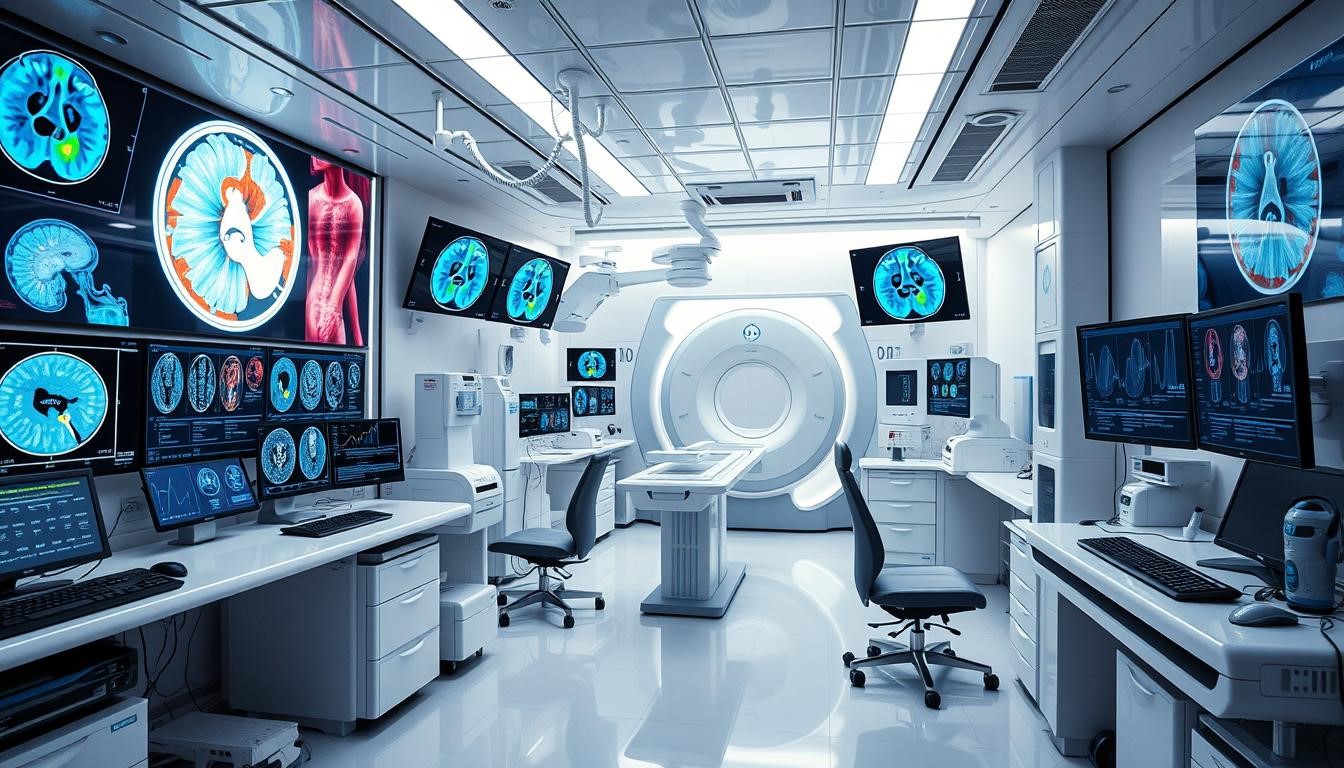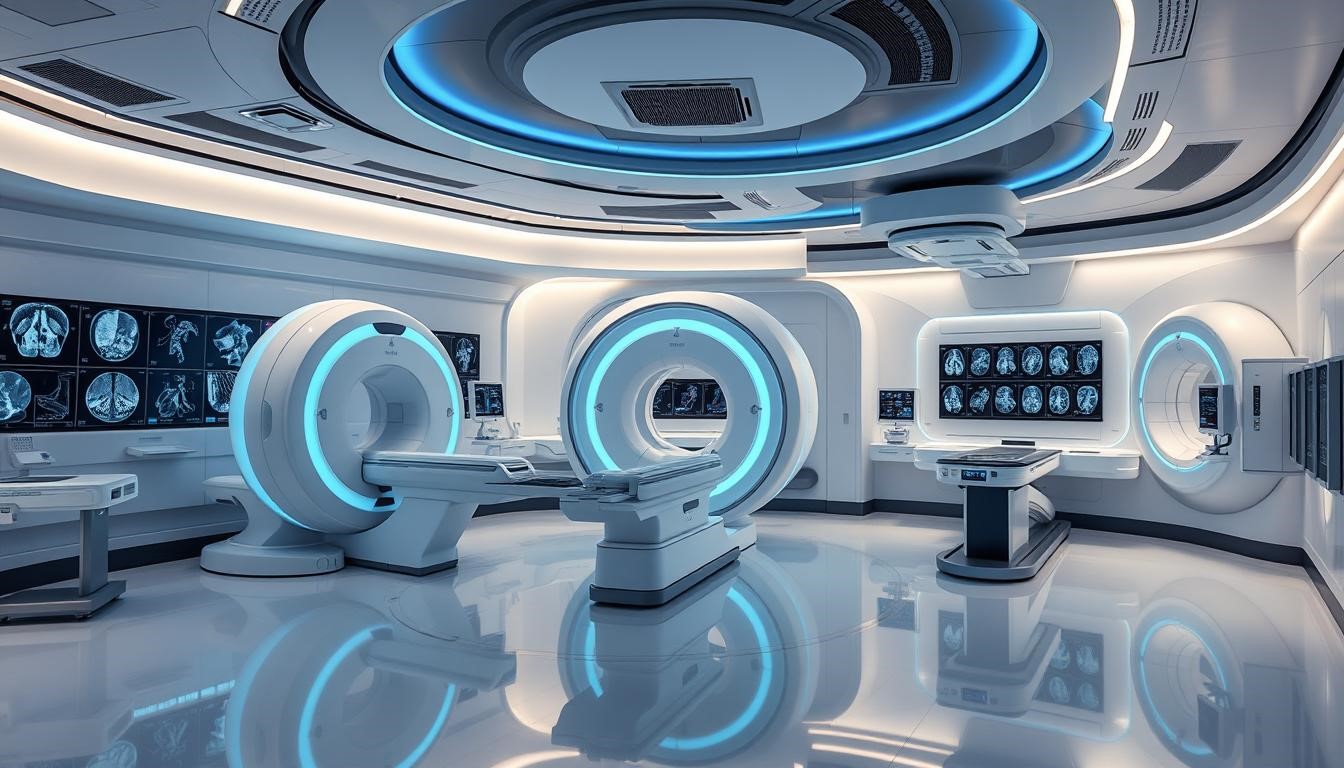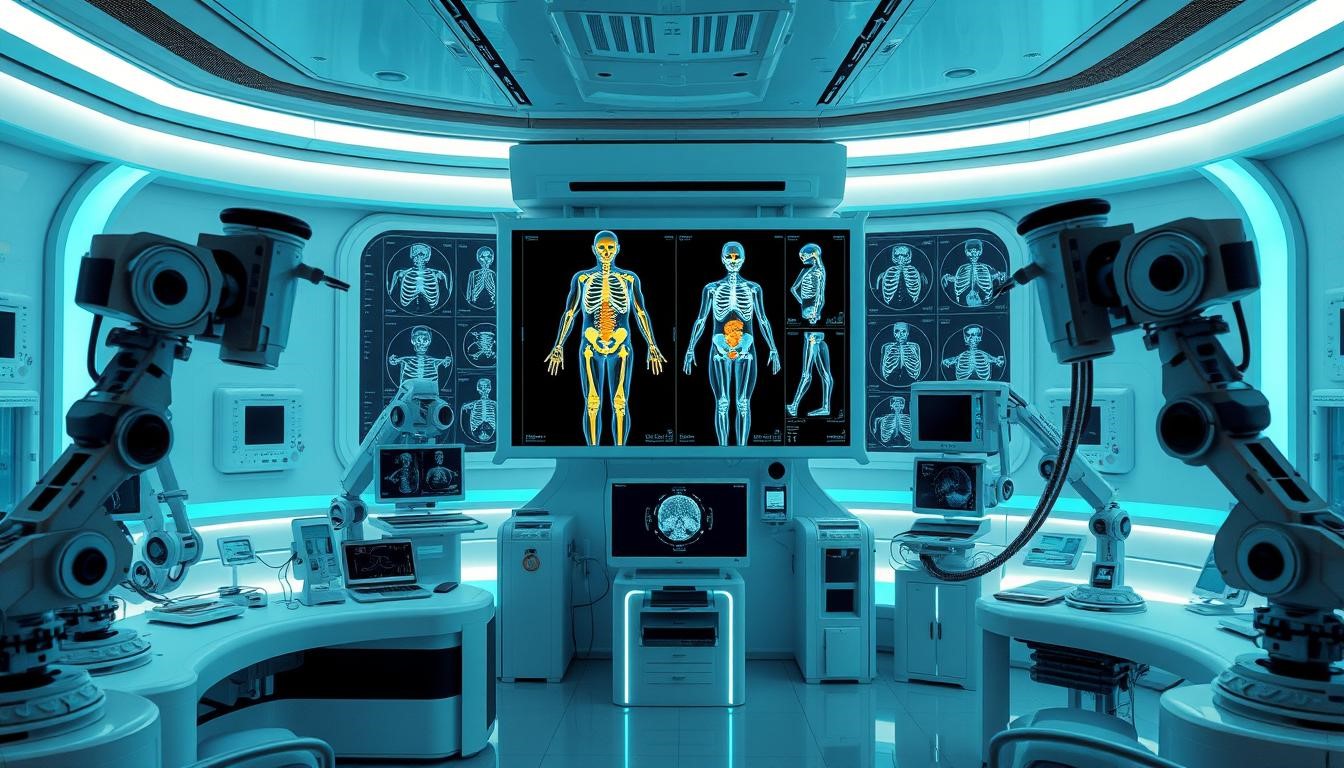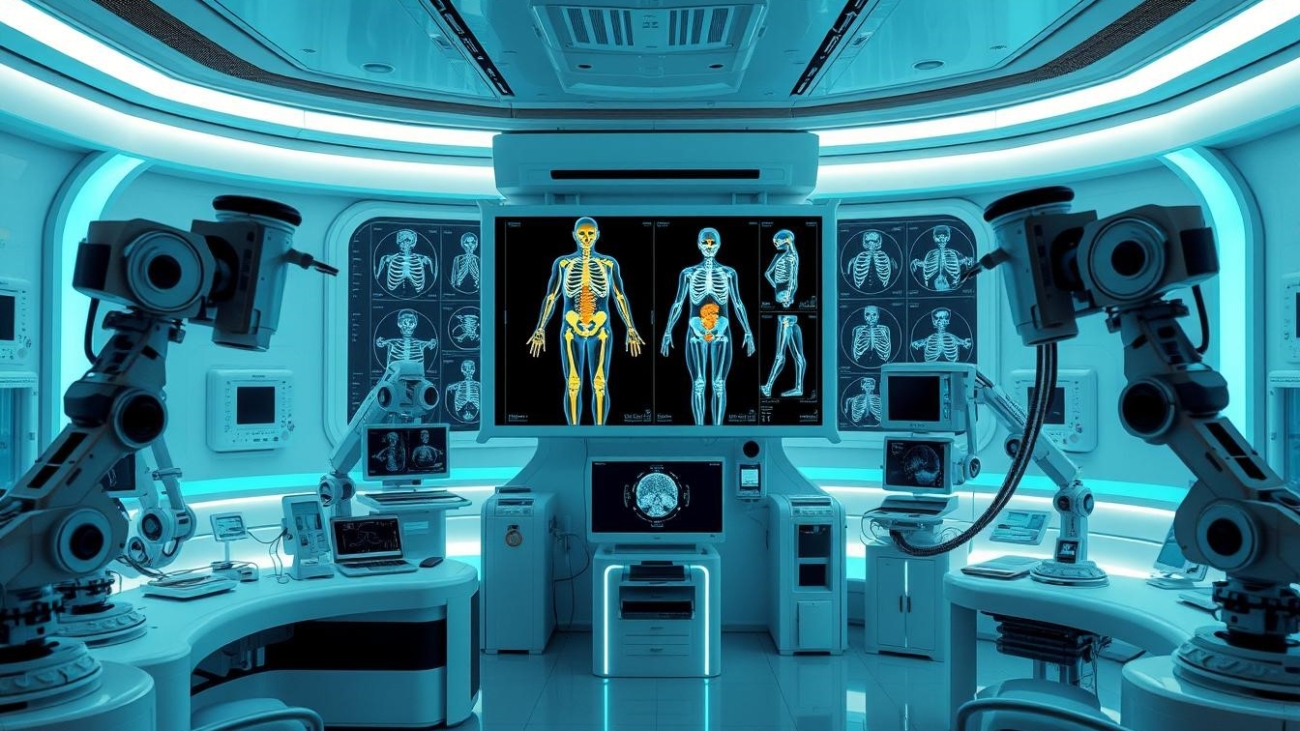Medical Imaging is key in healthcare, helping doctors diagnose and treat diseases better. New tools for automated medical image interpretation are changing healthcare. They make medical image analysis more accurate and efficient.
Artificial Intelligence and machine learning are transforming patient care. Automated medical image interpretation lets healthcare professionals focus on patient care. They no longer spend hours analyzing images.
New tools and technologies are being developed for medical imaging. This leads to better healthcare outcomes. Automated medical image interpretation is becoming more common in healthcare. It greatly improves the quality of medical imaging and healthcare services.

The Evolution of Medical Imaging Technology
Medical imaging has changed a lot over the years. This change is thanks to new technology and the need for better diagnoses. Radiology, a key part of medical imaging, has been at the heart of these changes. It has moved from old image analysis methods to today’s automated healthcare.
Automation in medical imaging has changed how doctors diagnose and treat patients. With medical imaging, doctors can now analyze images better and faster. This leads to better care for patients. Automation has also helped create more advanced medical imaging technologies, making radiology even better.
Key Milestones in Medical Imaging
- Introduction of digital imaging technologies
- Development of automated image analysis software
- Integration of artificial intelligence in medical imaging
As medical imaging tech keeps getting better, we must tackle current challenges. This ensures patients get the best care. Medical imaging will keep being a key tool in fighting diseases. The future of radiology and medical imaging looks bright, with ongoing research to improve image quality and care.
Understanding Automated Medical Image Analysis
Automated medical image analysis is changing healthcare fast. It’s making how we look at medical images better. This tech could change healthcare by making diagnoses more accurate and quicker. It also helps care for patients better.
In healthcare, this tech uses artificial intelligence (AI) and machine learning. These tools help computers learn from lots of medical images. They can spot patterns and predict things. This tech is used for many things, like finding tumors and tracking diseases.
Some big advantages of this tech in healthcare are:
- It makes diagnoses more accurate, reducing mistakes.
- It speeds up how long it takes to look at medical images. This lets doctors spend more time with patients.
- It helps doctors make better choices, leading to better care for patients.
As medical imaging keeps getting better, automated analysis will be even more key. Using AI and machine learning, doctors can use medical images to their fullest. This leads to better care for patients and better healthcare services.

Advanced AI Solutions in Medical Imaging
Artificial intelligence has changed medical imaging, especially in radiology. AI helps improve how images are analyzed and diagnosed. This could lead to better care for patients.
AI in radiology makes image analysis more accurate and quick. Machine learning and neural networks help spot problems and suggest diagnoses. This means doctors can make faster, more informed decisions.
Key Applications of AI in Medical Imaging
- Image segmentation and registration
- Computer-aided detection and diagnosis
- Image-guided therapy and treatment planning
AI in medical imaging can make healthcare better and cheaper. As AI gets better, we’ll see more progress in radiology. This will lead to better health services and outcomes for patients.
Clinical Applications and Benefits
Automated medical image analysis is changing healthcare. It makes diagnoses more accurate and saves time. This technology helps doctors make better treatment plans for patients.
This technology is used for X-rays, CT scans, and MRIs. It helps doctors spot problems early. This leads to better care and more efficient clinics.
Automated medical image analysis is used in many ways. It’s used for:
- Diagnostic imaging: It helps find issues like tumors and fractures.
- Image-guided therapy: It guides procedures like biopsies and tumor treatments.
- Personalized medicine: It helps tailor treatments to each patient’s needs.
The benefits are clear. It boosts accuracy, saves time, and improves care. It also cuts costs by reducing the need for extra tests.
In summary, automated medical image analysis is making a big difference. As it gets better, we’ll see even more ways it helps healthcare. This will lead to better care and more efficient clinics.
Implementation Challenges and Solutions
Adding automated medical image analysis to clinical settings, especially in radiology, comes with hurdles. One big issue is fitting new tech into old systems. This can be hard and slow. Radiology teams need to tackle these problems to make sure the new tech works well.
Challenges include making sure data fits, integrating into current workflows, and training staff. To beat these, healthcare groups should plan carefully. They should work together, including IT experts, doctors, and others. This teamwork helps make the switch smoother.
- Developing standardized data formats to facilitate compatibility
- Creating customized workflow integration plans to minimize disruptions
- Providing comprehensive training programs for radiology staff
By tackling these challenges and finding good solutions, healthcare teams can make automated image analysis work in radiology. This leads to better care for patients and more accurate diagnoses.

Future Perspectives in Medical Image Analysis
Looking ahead, new technologies will change healthcare a lot. Artificial intelligence and machine learning will make doctors more accurate and patient care better. These changes will lead to better treatments and health results.
Research is key to these advancements. We’re working on smarter machine learning and combining medical images with health records and wearables. This will help us understand and achieve big breakthroughs soon.
Emerging Technologies
- Artificial intelligence and machine learning
- Deep learning and neural networks
- Internet of Medical Things (IoMT) devices
These new technologies will bring big changes to medical image analysis. We’ll see better diagnosis and more tailored treatments. Focusing on these areas will help us build a healthcare system that puts patients first.
Conclusion: Transforming Healthcare Through Automated Imaging
Medical imaging technology is getting better fast. Automated analysis solutions are changing healthcare a lot. They use new medical imaging and AI to help doctors make better diagnoses faster.
Radiology is key in this big change. Radiologists are experts in reading medical images. They will use these new technologies to help patients more than ever before.
With more work and teamwork, we can make the most of automated medical imaging analysis. This will lead to better health care for everyone. It’s a big step forward for the future of health.
FAQ
What is automated medical image interpretation?
Automated medical image interpretation uses advanced tech like AI and machine learning. It analyzes medical images better and faster than old methods.
How has medical imaging technology evolved over time?
Medical imaging tech has changed a lot. It moved from old ways to using AI and automation. This change has made diagnoses more accurate and quicker, helping patients more.
What are the key benefits of automated medical image analysis?
Automated image analysis boosts accuracy and cuts down on time. It uses AI and machine learning to work on images better and faster.
What are some of the advanced AI solutions being developed for medical imaging?
New AI for medical imaging includes machine learning and deep learning. These help improve how images are analyzed and understood.
How are automated medical image analysis techniques being applied in clinical settings?
Automated image analysis is making diagnoses more accurate and quicker. It gives doctors better tools to work with, improving patient care.
What challenges are associated with implementing automated medical image analysis in clinical practice?
Using automated image analysis in clinics can be tough. It needs to fit with current workflows and deal with privacy and security. It also requires teamwork between doctors and tech experts.
What are the future prospects for medical image analysis?
Medical image analysis is set to get even better. New tech and research will keep changing healthcare for the better, helping patients more.


Add a Comment